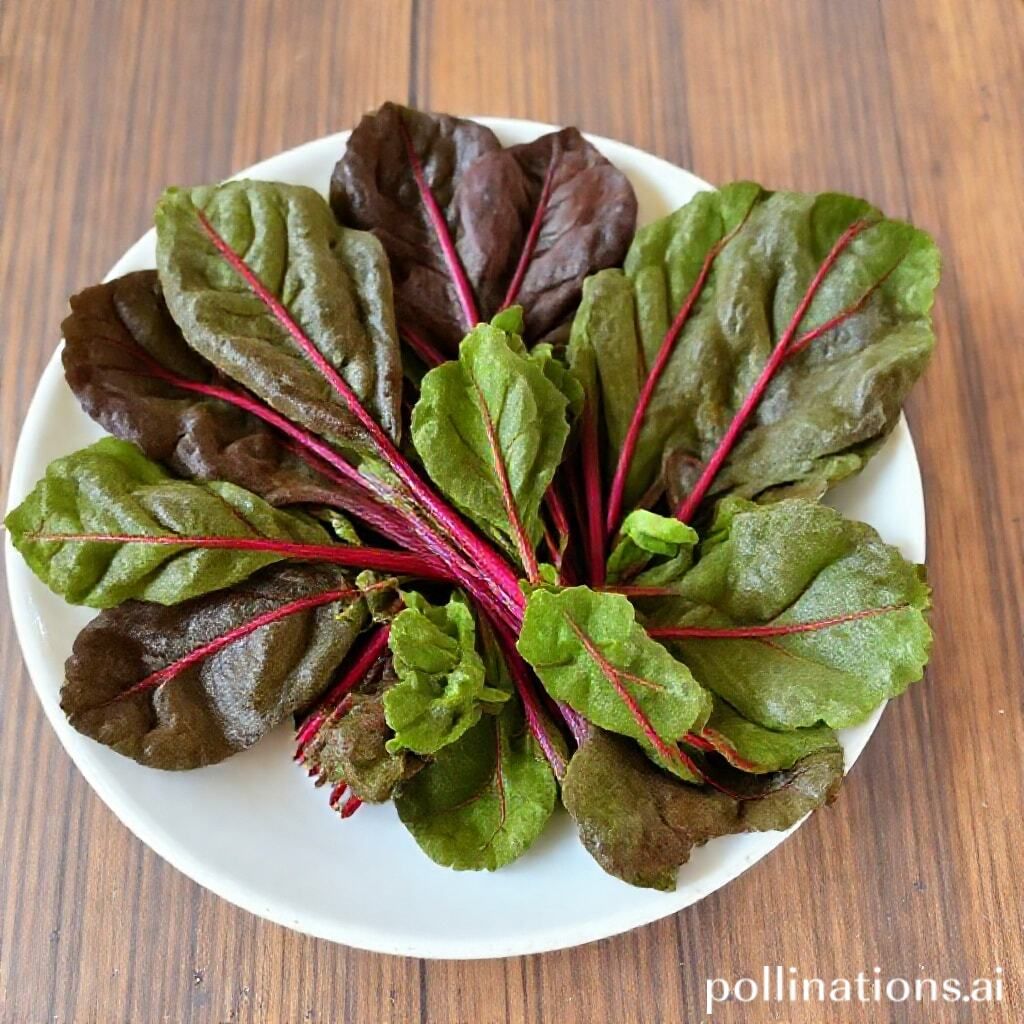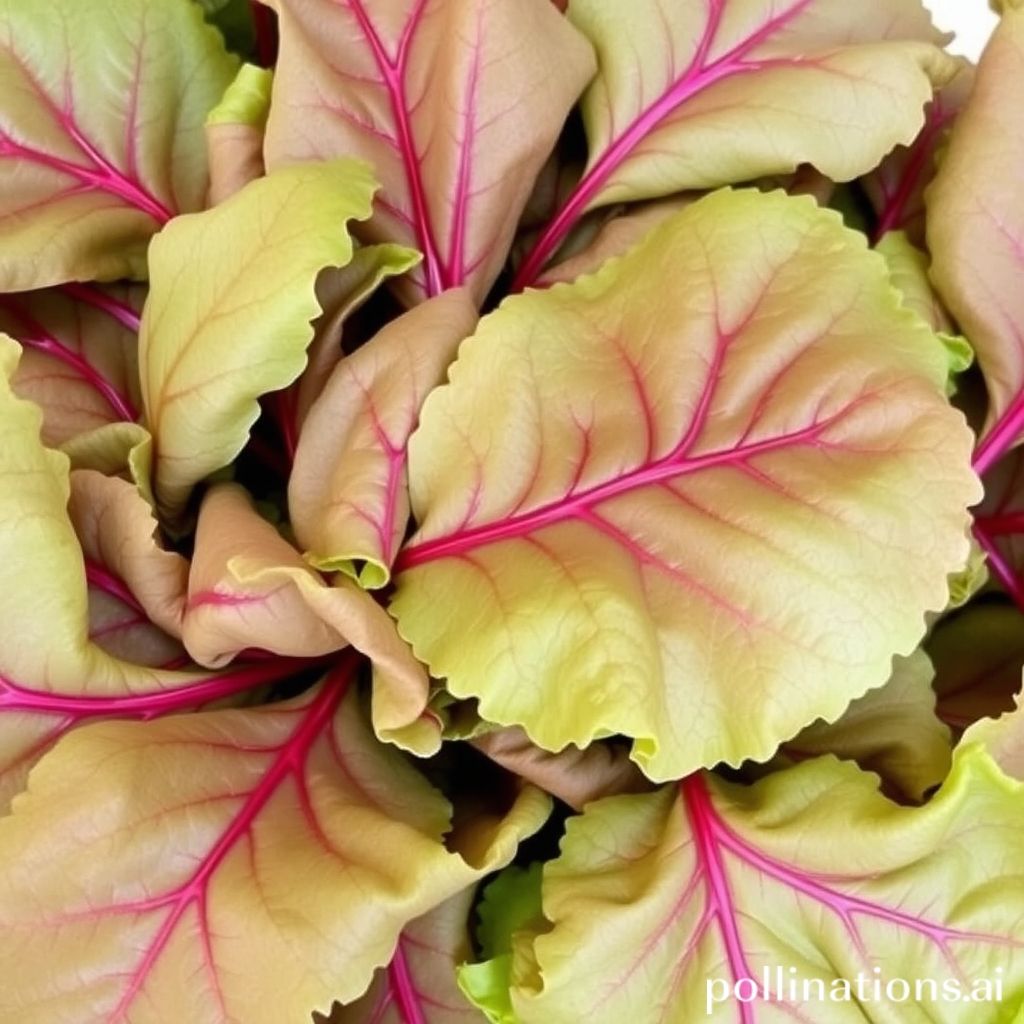When Should I Eat Beetroot Leaves?
Beetroot leaves have gained attention for their potential health benefits and unique taste. Many people are curious about when to eat beetroot leaves to maximize their nutritional value and enjoy their flavor.
Whether you’re a fan of beetroot or simply looking to incorporate more greens into your diet, Embracing the best time or occasion to consume beetroot leaves can help you make the most of this leafy vegetable. In this article, we will explore the various factors to consider when deciding when to eat beetroot leaves and provide some tips for incorporating them into your meals. So, if you’re ready to explore the world of beetroot leaves, let’s dive in!

Table of Contents
Health Benefits of Beetroot Leaves
1. Nutritional Value of Beetroot Leaves
Beetroot leaves, also known as beet greens, are packed with essential nutrients that contribute to overall well-being. These vibrant green leaves are an excellent source of vitamins A, C, and K, as well as minerals such as iron, calcium, and magnesium. They are also rich in dietary fiber, which aids digestion and promotes a healthy gut.
2. Rich in Vitamins and Minerals
Beetroot leaves are rich in vitamins and minerals that support various bodily functions. Vitamin A is essential for maintaining healthy vision and boosting the immune system. Vitamin C acts as an antioxidant, protecting the body against free radicals and strengthening the immune system. Vitamin K plays a vital role in blood clotting and bone health.
In addition to vitamins, beetroot leaves are a great source of minerals. Iron helps in the production of red blood cells, Meanwhile calcium and magnesium contribute to bone health and muscle function.
3. Potential Health Benefits
Consuming beetroot leaves can offer several potential health benefits. The high content of dietary fiber in these leaves aids in digestion and promotes regular bowel movements, preventing constipation. The antioxidants present in beetroot leaves help protect cells from damage caused by harmful molecules called free radicals, reducing the risk of chronic diseases such as heart disease and certain types of cancer.
Furthermore, the natural nitrates found in beetroot leaves have been shown to enhance athletic performance by improving oxygen utilization during exercise. These nitrates can also help lower blood pressure and improve cardiovascular health.
Expert Tips: Boost your health with beetroot leaves. Packed with vitamins, minerals, and antioxidants, they aid digestion, support immunity, and promote heart health.Best Time to Consume Beetroot Leaves
1. Fresh Beetroot Leaves in Salads or Sandwiches
One of the best ways to enjoy the health benefits and taste of beetroot leaves is by consuming them fresh in salads or sandwiches. Adding fresh beetroot leaves to your salads provides a refreshing and crunchy texture and boosts nutrients. You can chop the leaves into smaller pieces or use them as whole leaves.
2. Cooked Beetroot Leaves in Soups or Stir-Fries
Cooking beetroot leaves enhances their flavor and makes them more tender. You can incorporate cooked beetroot leaves into soups or stir-fries to add a nutritious element to your meals. Sautéing the leaves with garlic and olive oil further enhances the taste. Cooked beetroot leaves are a delicious addition to various dishes and offer a range of health benefits.
3. Beetroot Leaf Powder in Smoothies or Juices
If you prefer a more convenient way of consuming beetroot leaves, you can opt for beetroot leaf powder. This powdered form of beetroot leaves can be easily added to smoothies or juices, providing a concentrated dose of nutrients. Beetroot leaf powder is a great option for individuals who may not enjoy the taste or texture of fresh or cooked leaves but still want to reap the benefits.
| Benefits of Consuming Beetroot Leaves: |
|---|
| – Rich in vitamins and minerals |
| – Good source of dietary fiber |
| – May help lower blood pressure |
| – Potential antioxidant properties |
| – Supports healthy digestion |
How to Choose and Store Beetroot Leaves
1. Choosing Fresh and Vibrant Leaves
When selecting beetroot leaves, it is important to pick fresh and vibrant ones to ensure the best flavor and nutritional value. Here are some tips to help you choose the right beetroot leaves:
- Look for vibrant colors: Choose leaves that have a deep, rich color. Avoid wilted, yellowed, or leaves with brown spots.
- Inspect the leaves: Examine the leaves for any signs of damage or pests. Choose leaves that are free from holes, tears, or insect infestation.
- Check the stems: The stems of the beetroot leaves should be firm and not wilted. Avoid leaves with soft or slimy stems.
- Consider the size: Opt for medium-sized leaves as they tend to be more tender and flavorful compared to larger ones.
2. Proper Storage to Maintain Freshness
To keep your beetroot leaves fresh and flavorful, it is important to store them properly. Follow these guidelines for optimal storage:
- Remove excess moisture: Before storing, gently pat dry the leaves with a paper towel to remove any excess moisture. Excess moisture can cause wilting and spoilage.
- Store in a breathable bag: Place the beetroot leaves in a breathable bag, such as a perforated plastic bag or a loosely tied plastic bag. This allows air circulation and prevents condensation.
- Refrigerate in the vegetable drawer: Store the bag of beetroot leaves in the vegetable drawer of your refrigerator. The cool temperature helps maintain freshness.
- Use within a few days: Beetroot leaves are best consumed within a few days of purchase. Over time, the leaves may wilt and lose their flavor and nutritional value.

Tips for Preparing Beetroot Leaves
1. Washing and Removing Dirt
Before preparing beetroot leaves, it is important to wash them thoroughly to remove any dirt or impurities. Start by rinsing the leaves under cold running water to remove loose dirt. Then, fill a bowl or sink with clean water and soak the leaves for a few minutes. Gently swish them around to dislodge any remaining dirt. Finally, rinse the leaves again under running water to ensure they are completely clean.
2. Removing Tough Stems
To improve the texture and taste of beetroot leaves, it is recommended to remove the tough stems. You can do this by holding the stem with one hand and sliding the other hand along the stem, starting from the base towards the leafy part. This will separate the tender leaves from the fibrous stems. Discard the stems or save them for composting.
3. Chopping or Slicing for Desired Recipes
Once the beetroot leaves are washed and the stems are removed, you can proceed to chop or slice them according to your desired recipes. For salads or raw consumption, you may prefer to chop the leaves into bite-sized pieces. If you plan to cook the leaves, slicing them into thin strips or larger pieces can be more suitable.
Remember to use a sharp knife to ensure clean cuts and prevent bruising or tearing of the leaves. Additionally, it is recommended to use the beetroot leaves promptly after preparation to retain their freshness and nutritional value.
| Tips for Preparing Beetroot Leaves |
|---|
| 1. Washing and Removing Dirt |
| 2. Removing Tough Stems |
| 3. Chopping or Slicing for Desired Recipes |
Delicious Recipes Using Beetroot Leaves
1. Beetroot Leaf Salad with Feta Cheese and Walnuts
Enjoy the vibrant flavors of beetroot leaves in this refreshing salad. Start by washing and drying the leaves, then tear them into bite-sized pieces. In a bowl, combine the beetroot leaves with crumbled feta cheese and toasted walnuts for a delightful crunch. Drizzle with a dressing of your choice, such as a simple vinaigrette or a tangy yogurt dressing. Toss everything together and serve as a side dish or a light main course.
2. Sauteed Beetroot Leaves with Garlic and Olive Oil
Add a burst of flavor to your meals with sauteed beetroot leaves. Heat some olive oil in a pan and saute minced garlic until fragrant. Add the beetroot leaves, season with salt and pepper, and cook until wilted. The leaves will become tender and slightly crispy. Serve as a nutritious side dish alongside grilled chicken or fish, or toss with pasta for a quick and easy vegetarian meal.
3. Beetroot Leaf Smoothie with Fruits and Yogurt
Give your mornings a healthy boost with a beetroot leaf smoothie. Blend together beetroot leaves, your favorite fruits, and a dollop of yogurt for a refreshing and nutritious drink. You can add ingredients like bananas, berries, or mangoes for sweetness and additional nutrients. The beetroot leaves will add a vibrant green color and a subtle earthy taste to your smoothie. Enjoy it as a breakfast on-the-go or as a post-workout refresher.
These delicious recipes showcase the versatility of beetroot leaves and offer a range of flavors to suit different preferences. Whether you prefer a light salad, a savory sauteed dish, or a refreshing smoothie, incorporating beetroot leaves into your meals is a fantastic way to enjoy their health benefits and unique taste.
Conclusion
The best time to eat beetroot leaves is when they are fresh and in season. Incorporating them into your diet can provide numerous health benefits, including improved digestion, increased energy levels, and enhanced brain function.
Whether you add them to salads, smoothies, or stir-fries, beetroot leaves offer a delicious and nutritious addition to your meals. Experiment with different cooking methods and recipes to find your preferred way of enjoying these vibrant and nutrient-packed greens. So, next time you come across beetroot leaves, seize the opportunity to nourish your body and delight your taste buds.
Faq about Eating Beetroot Leaves
FAQ 1: Can I eat beetroot leaves raw?
Yes, you can eat beetroot leaves raw. They are edible and can be added to salads or used as a garnish.
FAQ 2: Are beetroot leaves safe to eat?
Yes, beetroot leaves are safe to eat. They are packed with nutrients and are considered a healthy addition to your diet.
FAQ 3: How should I cook beetroot leaves?
Beetroot leaves can be cooked in various ways. They can be sautéed, steamed, or added to soups and stews. You can also blanch them before using in recipes.
FAQ 4: Can I eat beetroot leaves if I have kidney problems?
If you have kidney problems, it is recommended to consult with your healthcare provider before consuming beetroot leaves. They contain oxalates, which can contribute to the formation of kidney stones in some individuals.
FAQ 5: Are beetroot leaves bitter?
Beetroot leaves can have a slightly bitter taste, especially if they are older or not cooked properly. In contrast, some people enjoy the bitterness, and it can be balanced by adding other ingredients during cooking.
By coalescing beetroot leaves into your meals, whether raw or cooked, you can enjoy their nutritional benefits At the same time adding variety to your diet. Remember to consult with a healthcare professional if you have specific health concerns or conditions.
Read Similar Post:
1. Exploring the Taste Profile of Beet Leaves: Are They Naturally Salty?
2. Nutritional Benefits: Beetroot vs. Beetroot Leaves – Which is Superior?

